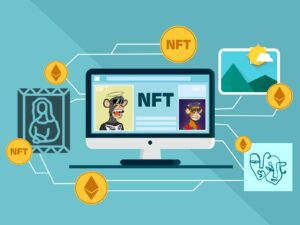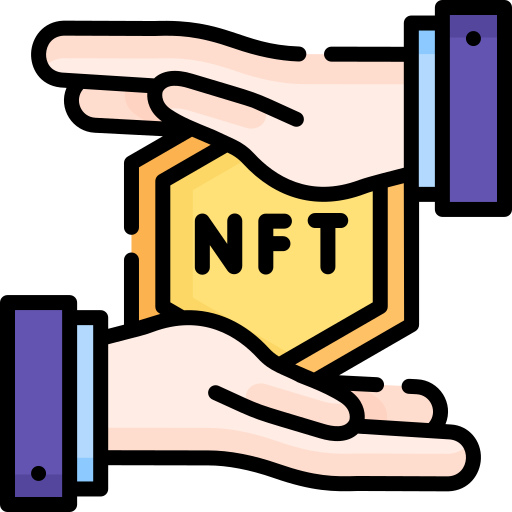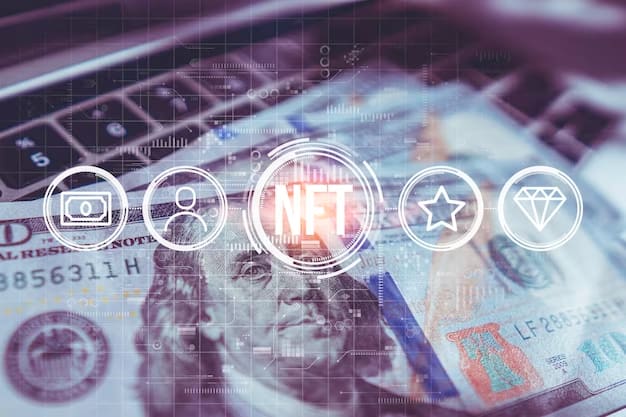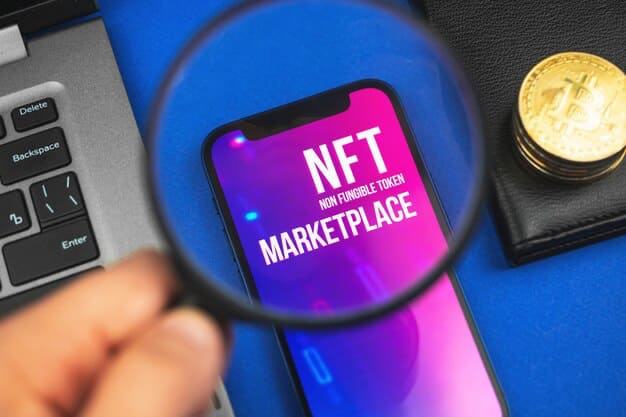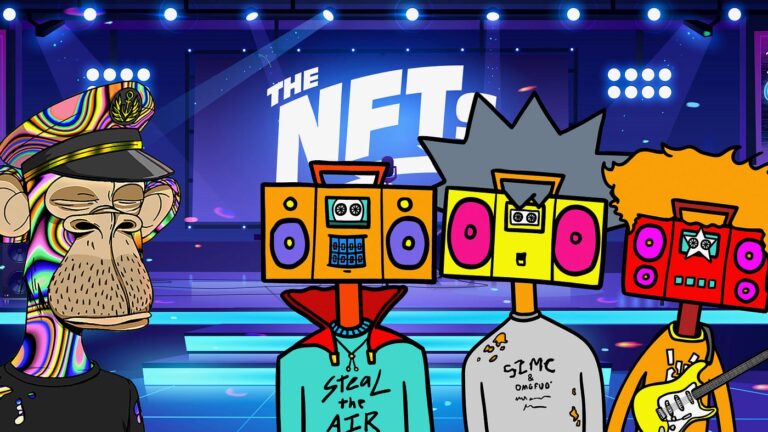In recent years, NFTs have dominated digital asset conversations, primarily driven by celebrity endorsements and significant investments. Despite a slight downturn due to market fluctuations and dubious projects, NFTs remain a prominent topic. This article explores the potential trajectory of NFTs in 2024, examining factors influencing their future and practical applications.
Key Influences Shaping NFT Evolution
Today’s online and offline actions hint at future NFT trends. Several factors stand out:
- Diverse Communities and Project Cultures: NFT popularity stems from community-driven word-of-mouth, with celebrity influence playing a significant role. High-profile collections like Bored Ape Yacht Club and games like Axie Infinity illustrate this trend;
- Advanced Airdrops: Personalized airdrops will be crucial in maintaining NFT relevance and utility. NFT-based travel ticket bundles exemplify this, offering customizable options and enhanced user convenience.
By 2024, NFTs have evolved beyond digital art, impacting sectors like real estate and healthcare. This section analyzes the technological advancements facilitating this expansion and explores the broadening scope of NFT applications beyond the art world.
Influential Factors Shaping NFTs
Key drivers for NFT evolution include blockchain advancements, regulatory changes, and shifting consumer preferences. This section details how these factors contribute to the NFT landscape, emphasizing their role in market dynamics and user adoption.
NFTs in Gaming: Revolutionary Changes
NFTs are redefining gaming economies, enabling true digital ownership and introducing play-to-earn models. This part focuses on the economic impact of NFTs in gaming, examining case studies of successful integrations and discussing future trends.
NFTs Transforming Business Models
NFTs offer innovative solutions for product authentication, supply chain transparency, and customer engagement. This section outlines specific business use cases, highlighting how NFTs are being utilized for enhancing customer trust and business efficiency.
User Experience and Interaction with NFTs
Enhanced user interfaces and simplified transaction processes are making NFTs more accessible. This section covers the technological improvements in NFT platforms that are enhancing user experience, focusing on interoperability and ease of use.
NFTs in Documentation and Verification
NFTs are revolutionizing document management, providing secure and immutable records for credentials and legal documents. This section examines how NFTs are being used for credential verification, highlighting their role in combating fraud and enhancing data integrity.
Enhanced System Integration with NFTs
The integration of NFTs with IoT and AI is creating new possibilities for smart contracts and automated transactions. This section delves into the synergies between NFTs and emerging technologies, discussing their combined potential to transform digital interactions.
Trends in NFT Adoption
Adoption trends show a shift towards NFTs in mainstream finance and e-commerce. This section discusses the factors influencing this trend, such as improved regulatory clarity and growing consumer awareness.
NFTs for Asset Ownership Tracking
NFTs offer unparalleled asset tracking capabilities, from provenance in art to ownership history in real estate. This part explores the practical applications of NFTs in asset tracking, emphasizing their role in enhancing transparency and security.
Advanced Gaming Experiences with NFTs
NFTs are introducing unique gaming experiences, fostering community-driven content creation and player-driven economies. This section highlights the impact of NFTs on game design and player engagement, citing examples of innovative gaming platforms.
NFTs Influencing Diverse Business Sectors
From digital fashion to tokenized real estate, NFTs are making inroads into diverse industries. This section explores the wide-ranging applications of NFTs across different sectors, illustrating their versatility and transformative potential.
Insights on the NFT Market
Market analysis indicates a maturation of the NFT sector, with a focus on sustainable growth and long-term value. This section provides an overview of the current NFT market, including trading volumes, key players, and emerging trends.
The Future Outlook for NFTs
The future of NFTs looks towards more integration with decentralized finance (DeFi) and the expansion of use cases in non-digital assets. This concluding section forecasts the potential trajectories of NFTs, considering technological advancements and market trends.
Comparative Table: NFTs in 2022 vs 2024
| Aspect | NFTs in 2022 | NFTs in 2024 |
|---|---|---|
| Market Trends | Early-stage growth, focused on digital art | Diversified applications in various industries |
| Business Integration | Limited to creative industries | Expanded to real estate, healthcare, and more |
| Gaming Integration | Initial adoption in play-to-earn models | Widespread use in mainstream gaming |
| User Experience | Basic, with complex interfaces | Streamlined, with enhanced interoperability |
| Documentation & Verification | Limited to digital art authenticity | Expanded to legal documents and credentials |
| System Interactions | Standalone NFT projects with minimal integration | Integrated with IoT, AI, and other technologies |
| Adoption Barriers | High, due to lack of understanding and trust | Reduced, with improved regulatory frameworks |
| Ownership Tracking | Focused on art provenance | Applied in diverse sectors like real estate |
| Business Model Impact | Niche impact on digital markets | Broad impact on traditional and digital markets |
NFT Marketplaces: Gateway to the Digital Asset Universe
In the ever-evolving realm of NFTs marketplaces serve as pivotal platforms for the exchange and creation of these unique digital assets. These marketplaces, akin to Amazon or eBay for tangible goods, offer a diverse range of NFTs including artwork, soundtracks, collectibles, in-game items, and real estate.
Key Aspects of NFT Marketplaces
- Blockchain Options: While Ethereum dominates the NFT space, other blockchain platforms like Binance Smart Chain, Flow, Tron, EOS, Solana, Polkadot, Tezos, Algorand, Cosmos, and WAX are also notable players, offering varied features and interoperability;
- Marketplace Mechanics: To engage with these marketplaces, users typically need a compatible crypto wallet, a funded account, and a user account on the chosen platform. Activities like buying, selling, and minting NFTs involve various steps and might incur blockchain network fees, especially on platforms like Ethereum known for higher costs;
- Types of Marketplaces: The NFT marketplaces can be broadly categorized into universal platforms like OpenSea and Rarible, and niche marketplaces catering to specific interests such as NBA Top Shot for sports collectibles, Axie Infinity for digital pets, Sorare for virtual football cards, Decentraland for virtual real estate, and Valuables for tokenizing tweets.
Conclusion
As we look towards the horizon of 2024, the landscape of Non-Fungible Tokens (NFTs) presents a remarkable evolution, transcending their initial roots in digital art to become pivotal elements in various sectors. This journey reflects not only technological advancement but also a significant shift in market perceptions and applications of NFTs.
The integration of NFTs in gaming has revolutionized the sector, introducing novel economic models and redefining player ownership. In business, NFTs have emerged as innovative tools for product authentication, supply chain transparency, and enhanced customer engagement, showcasing their versatility beyond the art world.
Moreover, advancements in user experience, primarily through improved interfaces and transaction processes, have made NFTs more accessible and appealing to a broader audience. Their role in documentation and verification has brought about a new level of security and integrity in managing personal and legal documents, combating fraud, and ensuring data accuracy.
The synergy of NFTs with emerging technologies like IoT and AI has opened up new possibilities for smart contracts and automated transactions, paving the way for more integrated and sophisticated digital interactions. These developments have led to a noticeable shift in adoption trends, with NFTs making inroads into mainstream finance and e-commerce.
The unparalleled asset tracking capabilities of NFTs have proven beneficial in various fields, from art provenance to real estate ownership, enhancing transparency and security in asset management. The gaming industry continues to be a significant area of growth, with NFTs fostering community-driven content creation and evolving player-driven economies.
